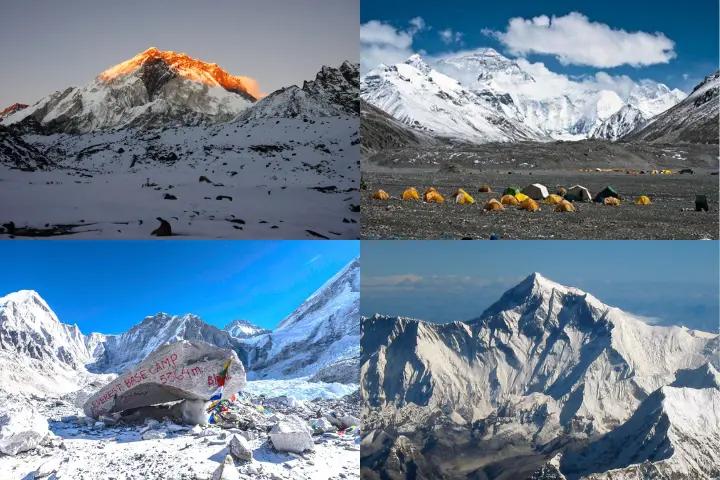When you think of Mount Everest, the first thing that comes to mind is its towering summit, standing as the Earth’s highest point. But before climbers attempt the dizzying heights of Everest’s peak, many adventurers first make their way to Everest Base Camp. So, what is the height of Everest Base Camp, and what makes the journey to this iconic destination so thrilling?
Let’s explore!
Height of Everest Base Camp
Reaching the height of Everest Base Camp is a dream destination for trekkers, not just from Nepal, but from around the globe. It’s not just a stopover for mountaineers gearing up for an Everest summit attempt; it’s a goal in itself for many. But let’s get to the heart of the matter: the altitude.
Everest Base Camp is located at an altitude of approximately 17,600 feet (5,364 meters) above sea level. That’s more than three miles high! For comparison, the tallest peak in the contiguous United States, Mount Whitney, stands at 14,505 feet (4,421 meters). So, when you’re at Everest Base Camp, you’re higher than any point in the continental U.S.
Challenges of the High Altitude of Everest Base Camp
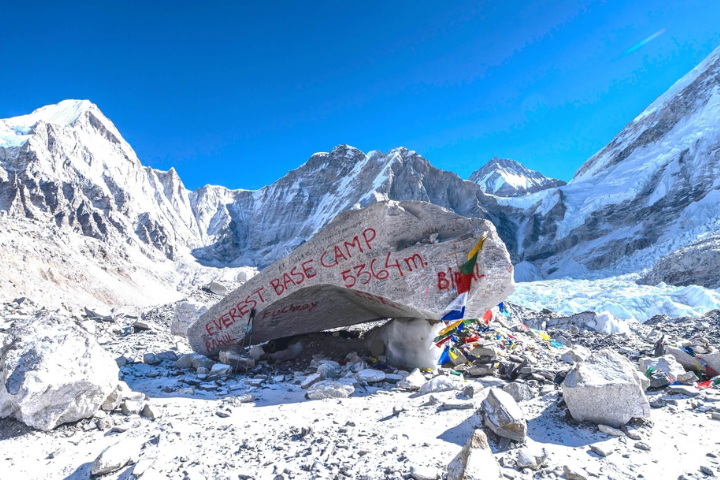
Being at such a high altitude of Everest Base Camp also means you’re in an area with a significantly reduced oxygen level. This reduction can make every step feel more challenging as your body works harder to get the oxygen it needs. This is why acclimatization is crucial for anyone embarking on this trek.
The altitude isn’t just a physical challenge, but it’s a mental challenge too. Knowing you’re at such an elevation on EBC can be both exhilarating and daunting. The thrill of standing so high above sea level is a unique experience that few other trekking locations can offer.
Effect of High Altitude of Everest Base Camp on the Body
Such high altitudes of Everest Base Camp result in less oxygen and thinner air. Your breathing and energy levels may be affected right away, making even easy tasks seem more difficult. Acclimatization is a crucial component of the EBC trek because your body requires enough time to adapt to these sudden shifts as you ascend higher.
The effects of the high altitude of Everest Base Camp can differ significantly from person to person. While some people may adjust more easily, others may still suffer from altitude sickness symptoms even at lower elevations. The trek is made more uncertain and adventurous by this unpredictability.
Weather Conditions at High Altitude of Everest Base Camp
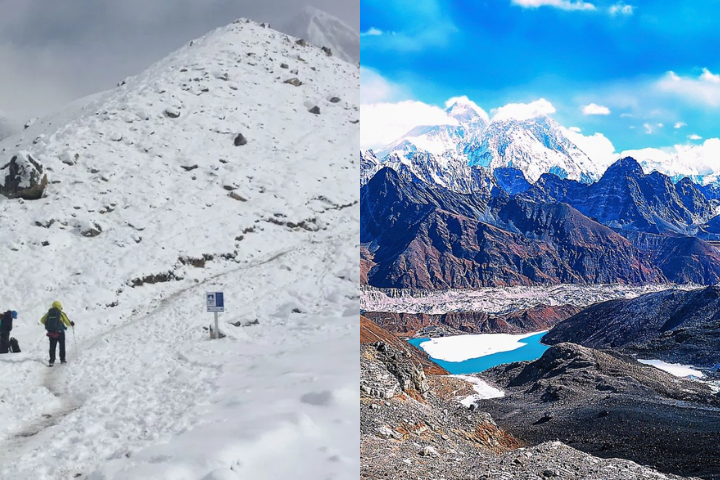
Understanding the altitude also means getting ready for potential uncertain weather changes. Even when the weather appears clear, trekkers must be ready for unexpected cold snaps or snowfalls because the weather can change quickly at such elevations.
The altitude of Everest Base Camp is a defining characteristic of the journey rather than just a statistic. It influences every aspect of the experience, including the mental toughness and physical difficulty needed to overcome it. The high altitude is a major reason why this trek is considered a significant achievement in the trekking community.
The Scenic and Cultural Significance
The altitude also dictates the landscapes you’ll encounter. The higher you go, the more dramatic and stark the scenery becomes. The vast, open vistas, the towering peaks, and the sense of being above the world are experiences unique to high-altitude treks like this one.
Moreover, the altitude of Everest Base Camp is a testament to the commitment and determination of those who undertake the journey. It’s a badge of honor that signifies not just reaching a destination but overcoming one of the earth’s natural challenges.
The Journey to Everest Base Camp
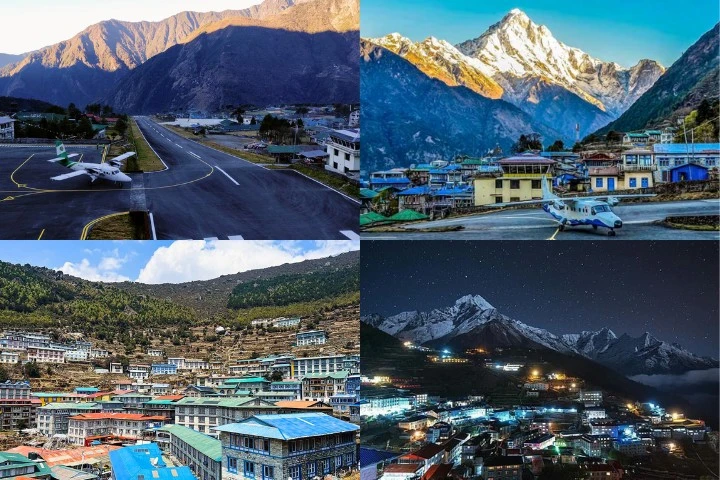
Reaching such a height of Everest Base Camp is not merely about getting to a high altitude. It’s about the journey, the experiences that you get along the way, and the breathtaking landscapes you encounter. Most treks start from the town of Lukla, often after a short yet dramatic flight from Kathmandu.
1. The Thrilling Flight to Lukla
The journey begins with an exhilarating flight to Lukla, one of the most challenging airports in the world due to its short runway and dramatic mountainous backdrop. This flight itself is an adventure, offering stunning aerial views of the Himalayas and setting the stage for the trek ahead.
2. Exploring the Trail from Lukla
Once in Lukla, trekkers are greeted by the vibrant energy of a town bustling with climbers and locals. This starting point is a hub of activity, where final preparations are made, and the real trekking begins. The atmosphere at Lukla is filled with excitement and anticipation as trekkers set out on the path to Base Camp.
From Lukla, the trail winds through lush forests, across suspension bridges, and past waterfalls. Each step brings new sights and sounds, introducing trekkers to the diverse beauty of the Khumbu region.
As you trek, you’ll pass through several Sherpa villages, each offering a unique glimpse into the local way of life. The Sherpa people living here are renowned for their mountaineering skills and warm hospitality, and interacting with them adds a rich cultural dimension to the trek.
3. Majestic Cultural Village of Namche Bazaar
Stopping in villages like Namche Bazaar, trekkers can experience local markets, taste traditional foods, and learn about the Sherpa’s unique relationship with the mountains. These cultural interactions are often highlights of the journey, providing insights into a way of life deeply connected to the high-altitude environment.
Monasteries dot the landscape, offering moments of peace and reflection amidst the physical challenges of the trek. These spiritual sites, with their prayer flags and wheels, are integral to the cultural tapestry of the region and offer trekkers a deeper connection to the spiritual significance of the Himalayas.
4. The Beauty of the Himalayas From EBC
The trek to EBC is not just a physical journey but a visual blessing as well. The landscapes are constantly changing, from verdant valleys to stark, rocky terrains as you ascend. Each day brings new vistas, with the towering peaks of Everest, Lhotse, and Nuptse serving as constant companions.
Trekkers are rewarded with stunning views of the Himalayas, which are particularly breathtaking at both sunrise and sunset. The sight of the sun casting golden hues over snow-capped peaks is an unforgettable experience that makes every step worthwhile.
The natural beauty of the region is complemented by the biodiversity of the Sagarmatha National Park. Trekkers may encounter a variety of wildlife, including Himalayan tahr and musk deer, adding an element of surprise and wonder to the trek.
Altitude Sickness and Acclimatization
While the trek to the height of Everest Base Camp is undeniably one of the most beautiful adventure, the altitude can present challenges. Altitude sickness, or Acute Mountain Sickness (AMS), can affect anyone, regardless of fitness level.
Understanding Altitude Sickness
Altitude sickness occurs when you ascend to high elevations too quickly, and your body does not get enough time to adjust to the reduced oxygen levels. The symptoms of altitude sickness include headaches, nausea, dizziness, and fatigue. In severe cases, it can lead to life-threatening conditions like High Altitude Pulmonary Edema (HAPE) or High Altitude Cerebral Edema (HACE).
The onset of altitude sickness can vary, with symptoms appearing within hours of reaching a higher elevation. It’s important to be aware of the signs and to take them seriously, as ignoring symptoms can lead to more severe conditions.
Understanding altitude sickness is crucial for making informed decisions on the trek. Recognizing early symptoms allows for timely intervention, such as descending to lower altitudes or seeking medical assistance, which can prevent complications.
Preventing and Managing AMS
To minimize the risk of altitude sickness, it’s important to acclimatize properly. This means taking rest days in the middle of the trek, ascending gradually, and staying hydrated. Many trekkers also take Diamox, a medication that can help prevent AMS. Listening to your body and communicating any symptoms to your guide is crucial.
Acclimatization strategies are integral to a successful trek. By incorporating rest days into the itinerary and maintaining a slow, steady pace, trekkers give their bodies the best chance to adjust to the higher altitude.
Hydration and nutrition play key roles in preventing altitude sickness. Drinking plenty of fluids and eating a balanced diet helps to maintain energy levels in the body and supports acclimatization. Trekkers should also be mindful of avoiding alcohol and caffeine, which can exacerbate dehydration.
Despite best efforts, some trekkers may still experience altitude sickness. It’s essential to remain vigilant and responsive to symptoms. Guides are trained to recognize and manage altitude-related issues, providing support and advice to ensure safety.
In cases where symptoms persist or worsen, the best course of action is to descend to a lower altitude. This can provide relief and is often the most effective treatment for altitude sickness.
The possibility of altitude sickness adds a layer of complexity to the trek, underscoring the importance of preparation and respect for the mountain environment. It’s a reminder that despite modern advancements, the mountains demand humility and caution.
Why Trek to Such a Height of Everest Base Camp?
You might be wondering, with the risks of altitude sickness, why do people trek to EBC? The answer lies in the once-in-a-lifetime experience it offers.
The trek to Everest Base Camp is not just about reaching a specific altitude; it’s about immersing yourself in the grandeur of the Himalayas. The landscapes are awe-inspiring, with towering peaks, glacial rivers, and tranquil valleys. The sense of achievement upon reaching Base Camp is indescribable.
The allure of the trek lies in the opportunity to stand in the shadow of the world’s tallest mountain. The majesty of Everest and its surrounding peaks is a sight that captivates and inspires adventurers from around the globe.
The trek offers a unique blend of natural beauty and cultural richness. The journey is as much about connecting with the landscape as it is about engaging with the people who call this region home. The combination of these elements creates an experience that resonates deeply with those who undertake it.
Personal Growth and Connections
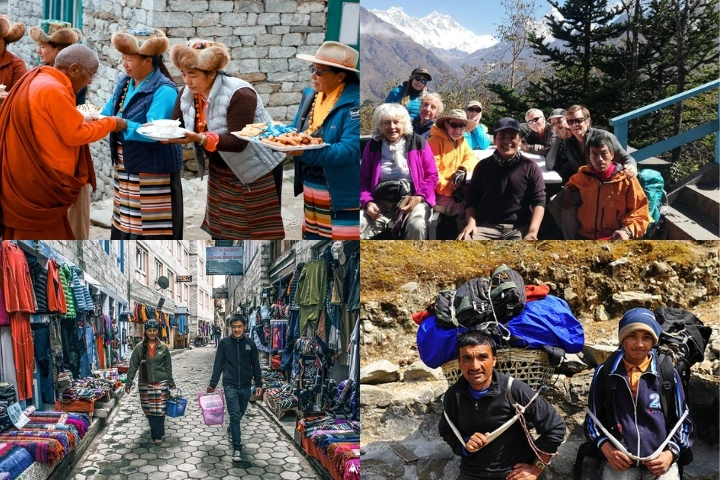
For many, the trek to Everest Base Camp is a personal journey. It’s a test of endurance and resilience, a chance to step out of your comfort zone and connect with nature in its rawest form. The memories and friendships forged on this trek are cherished for a lifetime.
The trek challenges individuals to push their limits, both physically and mentally. It requires determination, perseverance, and the ability to adapt to changing circumstances. These challenges are met with a profound sense of accomplishment upon reaching Base Camp.
The journey also provides an opportunity for reflection and personal growth. The simplicity of life on the trail, away from the distractions of modern life, allows trekkers to reconnect with themselves and the natural world.
The Everest Base Camp trek attracts adventurers from all over the world, creating a vibrant community of like-minded individuals. The camaraderie among trekkers is one of the highlights of the experience, as people from diverse backgrounds come together with a shared goal.
The bonds formed on the trail often lead to lasting friendships. Shared experiences, from overcoming challenges to celebrating milestones, create connections that endure long after the trek is over.
The sense of community extends to the local Sherpa people, whose hospitality and support are integral to the trek’s success. Their knowledge and experience enrich the journey, providing insights into the region’s history and culture.
Preparing for the Trek
If you’re considering the trek to EBC, preparation is key. Here’s what you need to know:
Physical Preparation
Training for the trek involves building your cardiovascular endurance, strength, and stamina. Long hikes, stair climbing, and carrying a backpack are great ways to prepare.
A structured training program can help ensure you’re physically ready for the demands of the trek. Incorporating a mix of aerobic exercises, strength training, and flexibility work can build the fitness needed for long days on the trail.
It’s also important to simulate trekking conditions during training. Practicing with the gear you plan to use and carrying a loaded backpack helps prepare your body for the realities of the trek.
Essential Gear and Packing Tips
You’ll need suitable clothing for varying temperatures, sturdy hiking boots, a quality sleeping bag, and other essentials like a first aid kit and water purification tablets. Packing smartly is crucial to ensure you’re prepared for the changing conditions.
Choosing the right gear is essential for comfort and safety. Layers of clothing allow for adjustments to fluctuating temperatures, while durable boots provide support and protection for your feet.
Packing efficiently means balancing the need for essential items with the desire to keep your load manageable. Prioritizing lightweight, multi-functional gear can help you carry only what you truly need.
Mental Preparation
Mental preparation is just as important as physical readiness. The trek can be challenging, and maintaining a positive attitude and resilience will help you push through tough days.
Visualizing the trek and setting realistic expectations can build mental resilience. Understanding that challenges are a part of the journey allows for better mental adaptation when faced with difficulties.
Developing coping strategies for tough moments, such as focusing on the present moment or recalling your motivations for the trek, can help maintain a positive mindset. Mental preparation is about cultivating the inner strength needed to persevere.
Final Thoughts
Trekking to Everest Base Camp is an adventure of a lifetime, offering a unique blend of natural beauty, cultural immersion, and personal growth. While the altitude is significant, with the right preparation and mindset, the journey is both safe and rewarding.
Whether you’re drawn by the allure of the Himalayas, the challenge of high-altitude trekking, or the chance to experience a different culture, Everest Base Camp is a destination that leaves a lasting impact on all who visit.
The journey to Everest Base Camp is more than just a trek; it’s an exploration of what it means to connect with the world and oneself. The memories created, the lessons learned, and the friendships forged make it an experience worth undertaking.
So, are you ready to take on the adventure and find yourself standing at the base of the world’s tallest mountain? The journey to Everest Base Camp awaits you!
FAQs
-
What is the height of Everest Base Camp?
The Everest Base Camp is situated at an altitude of 5,364 meters above sea level. It is one of the most iconic treks in Nepal, which holds an important role in the history of Nepal’s tourism and mountaineering.
-
Where is the Mount Everest located?
The tallest mountain in the world, the legendary Mount Everest, is located at the border of Nepal and China. This gigantic peak is an example of the wonders of nature, standing tall at an altitude of 8,848.86 m above sea level.
-
How long is the hike to Everest Base Camp?
The total duration of the Everest Base Camp trek is 14 days from the capital of Nepal, Kathmandu. The duration, however, may extend due to different circumstances like natural disasters, weather change, or any other uncertain situations.
-
Can a beginner trek Everest Base Camp?
Yes, a beginner can also trek to Everest Base Camp, but you need to be well prepared. Firstly, you need to be physically fit and healthy. Then, you need to get all the necessary gear like a trekking pole, trekking boots, warm clothes, and others. You will also need to get the necessary information about the trek, including acclimatization, routes, permits, and so on.
-
Which is better, EBC or ABC?
The question of which trek is better between ABC vs EBC is very debatable as both trek has their own importance and difficulty, offering different values. While the ABC trek is better for people with a short schedule, who trekkers looking for a more challenging adventure, EBC is perfect.
-
Which month is best for EBC?
The best months to visit Nepal for the EBC trek are April to May (spring) and October to November (autumn).
